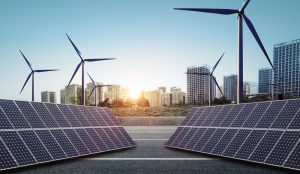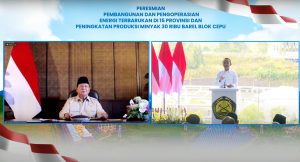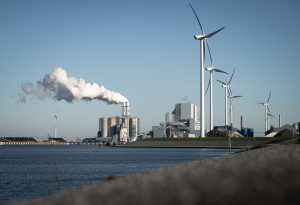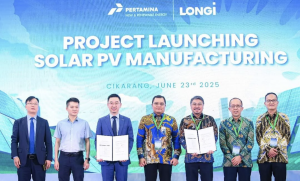Jakarta – Executive Director of the Institute for Essential Services Reform (IESR), Fabby Tumiwa, expressed his concern about the slow progress of the energy transition in Indonesia through 2024. According to him, steam power plants (PLTU) are still the backbone of Indonesia’s energy while burdening the environment and the economy, especially in attracting investment in the renewable energy sector.
“We are facing a situation where fossil energy, especially PLTU, still dominates with a contribution of around 67-68 per cent. The renewable energy target in the National Energy Policy of 23 per cent by 2025 is only one year away,” Fabby said in an official statement Tuesday, December 24.
The renewable energy mix has only reached 14 per cent, far from the 20-21 per cent target that should be achieved by the end of 2024. Fabby added that the difference of around 7 per cent equals an additional 7-9 gigawatts of renewable energy generation capacity. “This is a big job that must be done quickly.”
As the world moves towards reducing carbon emissions, Indonesia faces the challenge of stranded assets – fossil assets that will lose value in the future. Power plants, once a mainstay, are now becoming considered uneconomical as global competition for clean energy increases.
Fabby also highlighted the high greenhouse gas (GHG) emissions of Indonesia’s electricity sector, which reached 30-40 per cent higher than Vietnam. According to him, if Indonesia does not immediately accelerate renewable energy development, the impact will be felt on economic competitiveness. “We are worried that this imbalance will affect the 8 per cent economic growth target set by the government,” he said.
According to Fabby, the net-zero emissions target set by the government in 2060 is still not integrated. One example is Presidential Regulation 112 of 2022 concerning the termination of PLTU operations in 2050. “This regulation is not reflected in the National Energy General Plan or the latest RUPTL. If policies are not aligned, the 2060 target will be difficult to achieve,” he said.
Fabby emphasised the need for synchronisation between regulations. He said that policies at the ministerial level to companies such as PLN must have the same vision. “We need comprehensive alignment so that targets such as the termination of PLTU in 2040 can really be realised,” he said.
Despite facing various obstacles, IESR sees great opportunities in two main sectors, namely electricity and transportation. The development of 5-7 gigawatts of renewable energy generation by 2030 is considered a vital step to accelerate the energy transition in the electricity sector. Meanwhile, vehicle electrification is starting to show a positive trend, with the increasing adoption of electric motors, cars and buses. (Hartatik)













